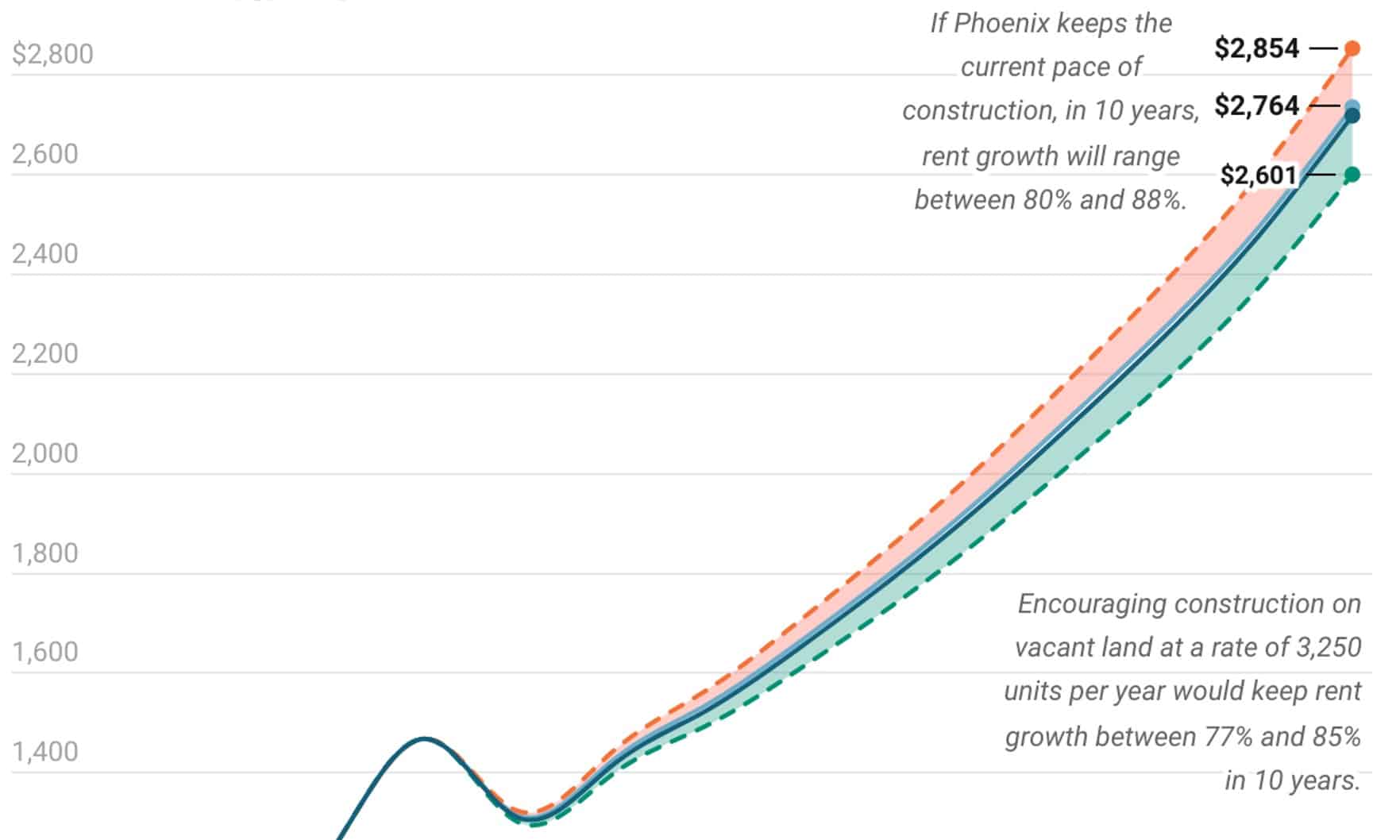As the population in Phoenix continues to grow, the demand for affordable rental units is also swelling. With over 30,000 newcomers migrating into the area in the past three years, RentCafe projects that Phoenix rents could double by 2032 unless the city takes action to create more rental units.
However, Phoenix is also one of the cities with the most undeveloped land — the third-highest amount in the nation — meaning the metro is in a unique position to get ahead of its own housing crisis.
Per RentCafe’s analysis, there are over 36 million square feet of undeveloped land in the Phoenix area. Builders could, in theory, start building over 32,000 apartment units immediately: 363 vacant plots around the area are already zoned for multifamily construction.
According to projections, these apartments could house at least 93,000 new Phoenix renters. That’s about three times more than the amount of Phoenix residents added in the wake of the pandemic. Neighborhoods with the greatest potential for future development include Midtown/Central City, Desert Ridge/Tatum Highlands/Northgate Village/Aviano, Salt River/Los Olivos and Southern Garden Industrial Park.

via RentCafe
If apartment construction in Phoenix slows down rather than increases, rents will likely double in the next ten years. RentCafe projects that if the rate of construction slows to 1,000 units per year, rents will reach $2,900 per month by 2032. However, if the pace of multifamily construction ramps up in Phoenix, rents will only climb to $2,600 per month.
This increase in apartment availability could be further accelerated by rezoning existing plots of land. Local government has already taken a few measures to encourage this, including lowering minimum acreage requirements for mobile home parks, legalizing accessory dwelling units and reducing parking requirements for multifamily projects. However, the rezoning process can be timely and expensive.
“City councils throughout The Valley continue to show major reluctance to zone infill parcels for multifamily density due to vociferous, well-organized opposition from neighboring single-family property owners,” said Paul Gilbert, co-founder of law firm Beus Gilbert McGroder PLLC. “This is true even when the general plan specifically allows multifamily zoning of infill parcels.”
